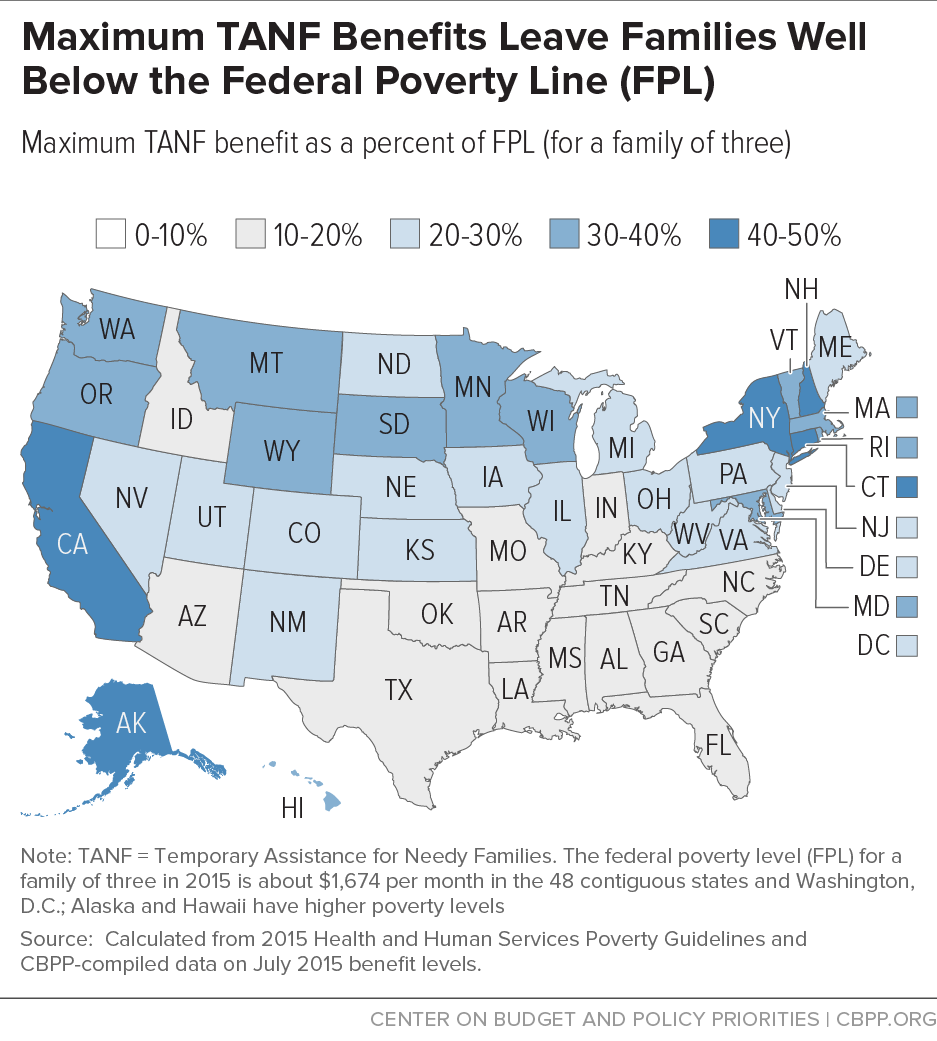BEYOND THE NUMBERS
Cash assistance benefits for the nation’s poorest families with children fell in inflation-adjusted terms in 2015 in 38 states and they’re now at least 20 percent below their 1996 levels in 35 states and the District of Columbia, our updated analysis finds.
To be sure, nine states and Washington, D.C. raised Temporary Assistance for Needy Families (TANF) benefits between July 2014 (the start of fiscal year 2015 in most states) and July 2015; three others enacted legislation that raised benefits after July 2015. The remaining 38 states, however, didn’t adjust benefits, allowing inflation to continue to erode their value.
The erosion of TANF benefits since the program’s creation in 1996 comes on top of even larger declines over the preceding quarter-century. Between 1970 and 1996, the value of cash assistance benefits for poor families with children fell by more than 40 percent in real terms in two-thirds of the states.
As of July 1, 2015, every state’s TANF benefits for a family of three with no other cash income were below 50 percent of the poverty line; most states’ benefits were below 30 percent of the poverty line (see map). Even the combination of TANF and SNAP (food stamp) benefits leaves a family below the poverty line in every state.
Also, TANF provides a safety net to significantly fewer poor families than in the past: in 2014, just 23 families received TANF benefits for every 100 poor families, down from 68 families receiving TANF for every 100 poor families in 1996. Even more troubling, 12 states’ TANF programs reach only ten families or fewer for every 100 families with children in poverty. For those families, TANF often is their only source of support; without it they would have no cash income to meet basic needs.

